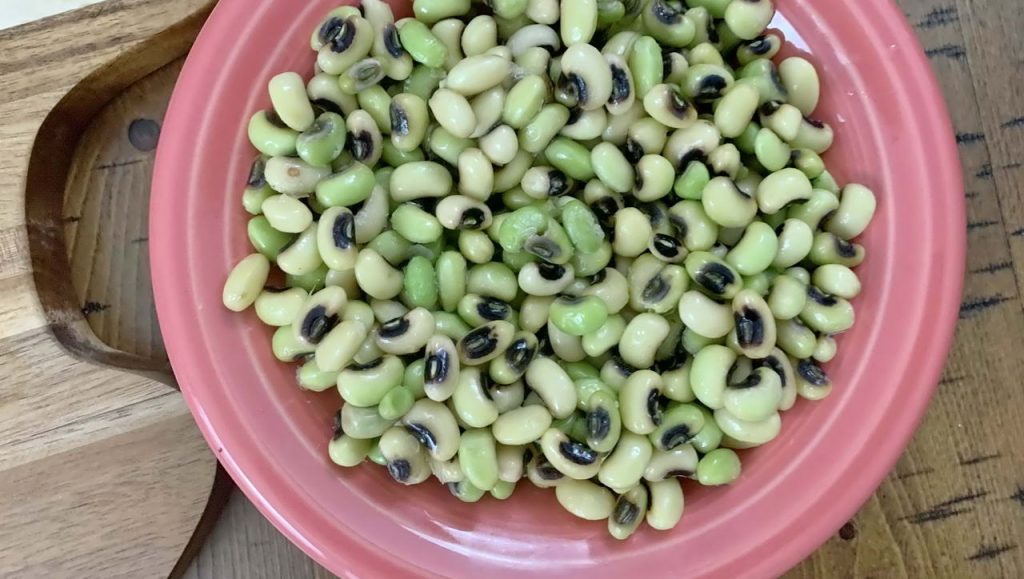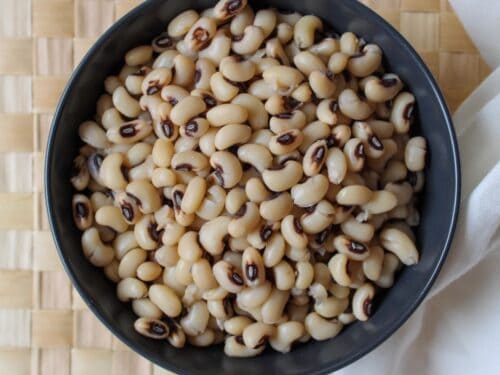Understanding Goat Cheese
Introduction to goat cheese and its history
When most people think of cheese, cow’s milk cheese is usually what comes to mind. However, goat cheese is an excellent alternative to cow’s milk cheese, and its distinct flavor and texture are worth exploring in detail. Goat cheese, also known as chevre, has been around for centuries and remains a beloved cheese lifestyle to this day.Goat cheese is believed to have originated in the Mediterranean, where it has been enjoyed for thousands of years. In fact, goat cheese likely predates cow’s milk cheese since goats were more common farm animals than cows. The process of making goat cheese involves heating and acidifying the milk, which then separates the curds from the whey. Once the whey is drained and the curds are transferred to molds, the cheese is aged to develop its signature tangy flavor, which is milder and more delicate than cow’s milk cheese.
There are a variety of types of goat cheese available today, each with their own unique flavor and texture. Some goat cheeses are soft and spreadable, while others are aged and crumbly. Fresh goat cheese, like cream cheese, is available in a variety of flavors that can be mixed with herbs or other ingredients. Another popular variety of goat cheese is feta cheese, a brined cheese that is commonly used in salads and sandwiches. Goat cheese is also an excellent source of protein, calcium, and vitamins, making it a healthier alternative to cow’s milk cheese. With so many unique varieties of goat cheese available, it’s no surprise that this cheese variant has become a staple in many cuisines across the world.Goat cheese is also high in healthy fats, which provide sustained energy to the body. Unlike cow’s milk cheeses, goat cheese is easier to digest, making it a good option for those with lactose intolerance. Additionally, goat cheese can be enjoyed in a variety of ways, from tartines to salads, and it can also be used in recipes as a substitute for cream cheese or other dairy products. Whether you’re a cheese connoisseur or just looking for something new to add to your cheese board, goat cheese is an excellent choice. Try it out with different herbs and spices to find your perfect pairing, and don’t be afraid to experiment with different flavors and textures!
Goat Cheese Recipes
Popular recipes using goat cheese
Goat cheese is a versatile and nutrient-packed ingredient that can be used in various recipes. From salads to pasta dishes, goat cheese can add depth and flavor to your favorite meals. There are several popular recipes that use goat cheese, such as baked goat cheese dip, goat cheese-stuffed chicken breasts, and goat cheese and herb frittata. Even if you are not a fan of goat cheese on its own, incorporating it into dishes like these can be a game changer.When cooking with goat cheese, there are a few tips to ensure you get the most out of its unique flavor and texture. For example, it’s important to use fresh goat cheese and let it soften at room temperature before working with it. Additionally, when pairing goat cheese with other ingredients, it’s best to choose flavors that complement each other, such as roasted beets, honey, and walnuts. It’s also important to not overdo it with the goat cheese as its flavor can be quite strong. Making sure the cheese is distributed evenly throughout the dish can help to balance the flavors.
If you’re looking to experiment with goat cheese in your recipes, there are endless possibilities. For instance, you can substitute it for cream cheese or sour cream in dips and spreads. You can also crumble it over salads or pizzas, or melt it over grilled vegetables for a creamy, tangy flavor. Goat cheese can add extra depth to your pasta dishes as well. Try mixing it with cooked pasta, roasted tomatoes, garlic, and basil for a simple yet flavorful dish. In addition, adding goat cheese to your omelets, quiches, and frittatas is an excellent way to introduce its creamy texture and earthy flavor to your breakfasts. With goat cheese, the opportunities are endless.When working with goat cheese, it’s important to not overdo it with the amount used as its flavor can be quite strong. Making sure the cheese is distributed evenly throughout the dish can help to balance the flavors. Those who are health-conscious can enjoy goat cheese guilt-free. It is lower in calories, fat, and cholesterol than many other types of cheese, but it is still packed with nutrients like calcium, protein, and vitamin D. In fact, goat cheese is often recommended for those who are lactose intolerant due to its high digestibility. These benefits make goat cheese a smart choice when it comes to choosing a cheese for your meals.When it comes to feta cheese, it is one of the oldest cheeses in the world, with evidence of its production dating back to Ancient Greece. It is a soft, crumbly cheese that is traditionally made from sheep’s milk, although some versions now use cow’s milk. Feta cheese is known for its tangy, salty taste and its ability to crumble easily, making it ideal for topping salads and incorporating into recipes. In addition to being delicious, feta cheese is also a healthy addition to your diet. It is rich in protein, calcium, and vitamin B12, and is lower in fat and calories than many other types of cheese. Feta cheese can also be a great option for those who are lactose intolerant due to its lower lactose content.
Exploring Feta Cheese
Introduction to feta cheese and its origins
Originated from Greece, feta cheese is one of the most ancient and well-known types of cheese worldwide. Feta cheese is made from sheep’s milk or a mixture of sheep’s milk and goat’s milk. The term “feta” refers to the Greek word meaning “slice,” which is the traditional method for serving feta cheese. Feta cheese is notably known for its salty, tangy taste and crumbly texture. The taste of feta cheese varies depending on the processing and storage methods.Feta cheese production goes through a rigorous process, and it is made by soaking in brine for several weeks. The process of making this cheese is still practiced in Greece, where feta cheese production is a traditional activity. Feta cheese has great health benefits, which makes it an ideal cheese for consumption. Among the benefits, the cheese has high nutritional contents, including calcium and phosphorus. Additionally, feta cheese has good amounts of proteins and B vitamins that are essential for body nourishment and growth.
Types of feta cheese, production process, and its benefits
Feta cheese is classified into two categories, namely the traditional Greek feta and the non-Greek feta. Traditional Greek feta is made using sheep’s milk from specific regions of Greece, while non-Greek feta is made using cow’s milk or a mixture of cow’s and goat’s milk. The traditional methods of making feta cheese include using wooden barrels that add to the unique flavor profile of the cheese. Non-Greek feta cheese is typically milder in flavor and is available in various types, including crumbled and cubed feta. Feta cheese is a versatile ingredient and can be a great addition to various dishes. Some of the benefits of using feta cheese include adding a unique tangy flavor to dishes, enhancing taste and texture, and providing a healthy source of protein and other vital nutrients. Feta cheese is commonly paired with salads, pasta dishes, and roasted vegetables, among others, and is a must-try for any cheese lover.Continuing from the previous paragraph, the various types of feta, such as Bulgarian and Romanian feta, have their unique taste, texture, and uses. Bulgarian feta has a tangier taste with a saltier finish and is generally softer and less crumbly than Greek feta. Romanian feta, on the other hand, is drier, denser, and saltier than the Greek one. The production of these cheeses has undergone some transformation over the years owing to the growing demand in the market and the advancements in technology. Whether you prefer traditional Greek or non-Greek feta, the cheese is a perfect ingredient to elevate your dishes’ taste. When storing feta cheese, it is advisable to keep it in a brine solution or wrap it tightly in a plastic film to keep it fresh and prevent it from drying out. Now that we have a better understanding of feta cheese let’s explore how to include it in various recipes and cuisines.
Feta Cheese Recipes
Popular recipes using feta cheese
Feta cheese is commonly used in traditional Greek dishes such as Greek salads, spanakopita, and moussaka. However, it can be used in many other cuisines and dishes. It is a versatile cheese that adds a tangy, salty flavor to any meal. Feta cheese is often crumbled on top of salads and roasted vegetables. It also pairs well with meats such as lamb or chicken.In addition to salads and roasted vegetables, feta cheese is also a popular ingredient in dips and spreads like tzatziki and hummus. These dips pair well with pita bread or as a topping for grilled meats. Feta cheese can also be used in pasta dishes, such as mac and cheese or stuffed pasta shells, to add a sharp and salty flavor. And let’s not forget dessert – feta cheese is often used in sweet pastries like baklava or as a filling for crepes. With its versatility and unique flavor, feta cheese can be used in so many different dishes and cuisines.
How to incorporate feta cheese in different cuisines and dishes
One of the most popular ways to use feta cheese is to incorporate it into Mediterranean dishes. Feta cheese can be crumbled onto Greek-style pizzas and flatbreads, or it can be added to spanakopita or tiropita (Greek spinach and cheese pies). Feta cheese also plays an important role in Middle Eastern cuisine, such as Lebanese and Turkish dishes. For example, it is used in the popular Lebanese dip, baba ganoush, and in Turkish sigara borek (fried pastry rolls filled with feta cheese and parsley).
Feta cheese can also be used in Mexican cuisine. It adds a tangy flavor to taco bowls, enchiladas, and as a topping for nachos. Furthermore, feta cheese can be used in Italian cuisine as a substitute for Parmesan or other hard cheeses. For example, feta cheese can be used in lasagna and other pasta dishes. The possibilities are endless when it comes to incorporating feta cheese into various cuisines and dishes!When it comes to using feta cheese, the most important thing to remember is to balance it with other ingredients in your dish, especially if you’re using it as a topping or a filling. The strong and salty flavor of feta cheese can easily overwhelm the other flavors in the dish. In addition, it is important to choose the right type of feta cheese that best suits the recipe.When it comes to choosing feta cheese, it’s essential to pay attention to the type of milk used, as well as the texture and flavor of the cheese. You can find feta cheese made from goat’s milk, sheep’s milk, or a combination of both. Each type has a slightly different texture and flavor, so it’s important to choose the right variety for your dish. It’s a good idea to opt for crumbly feta cheese if you’re planning to use it as a topping, while a creamier feta may work better in dips or spreads.
Conclusion
Finally, it’s important to note that feta cheese can be a healthy addition to your diet. It is a good source of protein, calcium, and vitamin B12. It is also lower in fat and calories compared to other types of cheese.On top of that, the production process of feta cheese involves preserving it in brine, which provides a natural way of preserving the cheese and enhancing its flavor. The brine also makes feta cheese very resistant to spoilage, making it a great option to keep in the fridge for a longer period of time.
In summary, feta cheese is a versatile and delicious cheese that can be used in many ways. Whether in a salad, dip, or pasta dish, feta cheese adds a tangy and salty flavor. It can be found made from goat’s milk, sheep’s milk, or a combination of both, and each type has a slightly different texture and flavor. Additionally, feta cheese is a good source of protein, calcium, and vitamin B12, making it a healthy addition to your diet. With so many possibilities and health benefits, it’s not surprise that feta cheese is a staple in many kitchens around the world!
To incorporate feta cheese into your meals, here are a few recipe ideas to get you started:
1. Greek Salad: A classic salad that includes cucumbers, tomatoes, black olives, red onions, and of course, feta cheese. Toss with a simple vinaigrette for a light and refreshing lunch.
2. Feta and Spinach Stuffed Chicken Breast: Cut a pocket into a boneless, skinless chicken breast and stuff with a mixture of feta cheese, cooked spinach, and sun-dried tomatoes. Bake until golden brown and juicy.
3. Mediterranean Pasta Salad: Cook your favorite pasta and toss with roasted vegetables, kalamata olives, and crumbled feta cheese. Dress with a lemon and olive oil dressing for a quick and easy dinner.
4. Feta and Herb Dip: Mix feta cheese, Greek yogurt, fresh herbs, garlic, and lemon juice in a food processor until smooth. Serve with crudites or grilled pita bread.
5. Feta and Watermelon Salad: Cube watermelon and top with crumbled feta cheese and fresh mint leaves. Drizzle with a balsamic reduction for a sweet and tangy side dish.
These are just a few examples of what you can do with feta cheese. Remember to experiment with different flavor combinations to find your favorite dishes!Sure! What else would you like me to add on this topic?How about some information on the history of feta cheese and how it became so popular? Or maybe some unique feta cheese dishes from around the world?Sure! Here’s a paragraph on the history of feta cheese:
Feta cheese has roots in ancient Greece dating back to the 8th century BC. Made from sheep’s milk or a combination of sheep’s and goat’s milk, feta cheese was a way to preserve milk during times of abundant milk supply. The cheese was stored in barrels of brine, which allowed it to last for long periods. Feta cheese is thought to have been a staple in the diets of ancient Greeks, so much so that it was even used as a form of payment for taxes in some regions. Today, feta cheese is still a staple in Greek and Mediterranean cuisine and is enjoyed all over the world.
And here’s a paragraph on unique feta cheese dishes from around the world:
Feta cheese is used in many different cuisines around the world. In Egyptian cuisine, feta cheese is used in a popular dish called foul medames, which is a dish made with warm fava beans, tahini sauce, olive oil, and feta cheese. In Bulgaria, a traditional pastry called banitsa is made with feta cheese and filo pastry. In Russia, feta cheese is used in a salad called “salade Olivier” which also includes diced potatoes, carrots, pickles, and boiled eggs. Finally, in Lebanon, a popular dish called “fattoush” is made with crispy pita bread, fresh vegetables, herbs, and of course, feta cheese!
Welcome to my blog! I’m Kenelm Frost, a passionate cook who loves making pizza and pasta. Through this blog, I share tips, tricks, and recipes to help fellow foodies create amazing Italian dishes at home.




